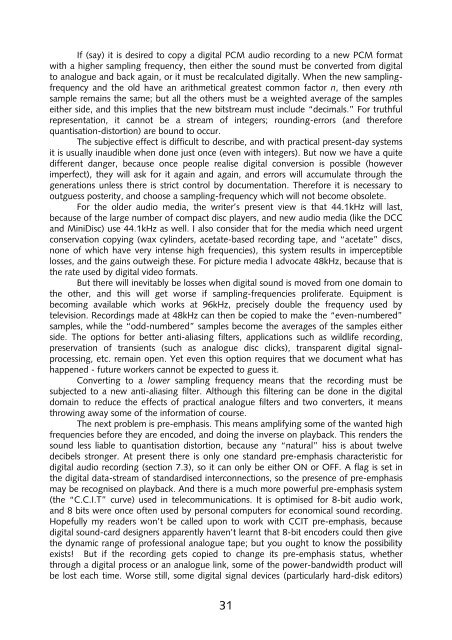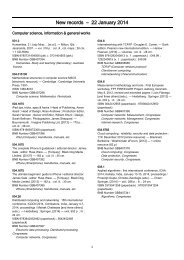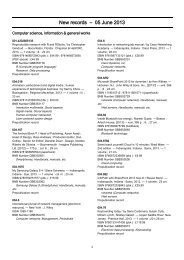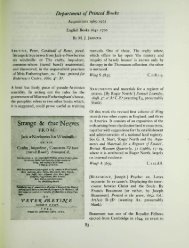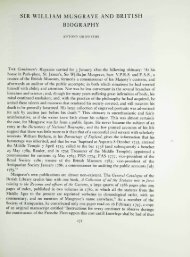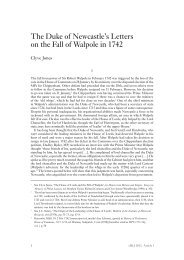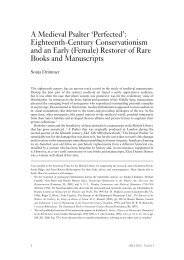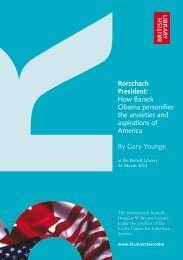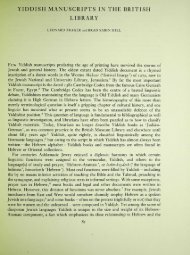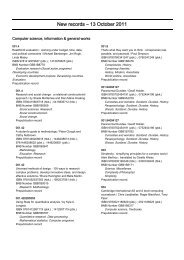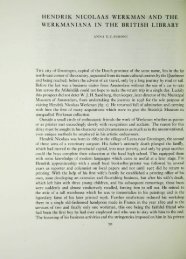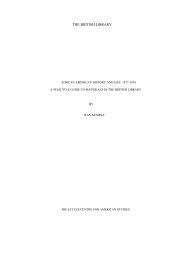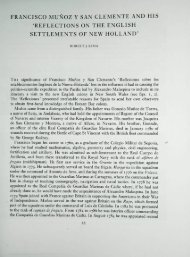MANUAL OF ANALOGUE SOUND RESTORATION ... - British Library
MANUAL OF ANALOGUE SOUND RESTORATION ... - British Library
MANUAL OF ANALOGUE SOUND RESTORATION ... - British Library
Create successful ePaper yourself
Turn your PDF publications into a flip-book with our unique Google optimized e-Paper software.
If (say) it is desired to copy a digital PCM audio recording to a new PCM format<br />
with a higher sampling frequency, then either the sound must be converted from digital<br />
to analogue and back again, or it must be recalculated digitally. When the new samplingfrequency<br />
and the old have an arithmetical greatest common factor n, then every nth<br />
sample remains the same; but all the others must be a weighted average of the samples<br />
either side, and this implies that the new bitstream must include “decimals.” For truthful<br />
representation, it cannot be a stream of integers; rounding-errors (and therefore<br />
quantisation-distortion) are bound to occur.<br />
The subjective effect is difficult to describe, and with practical present-day systems<br />
it is usually inaudible when done just once (even with integers). But now we have a quite<br />
different danger, because once people realise digital conversion is possible (however<br />
imperfect), they will ask for it again and again, and errors will accumulate through the<br />
generations unless there is strict control by documentation. Therefore it is necessary to<br />
outguess posterity, and choose a sampling-frequency which will not become obsolete.<br />
For the older audio media, the writer’s present view is that 44.1kHz will last,<br />
because of the large number of compact disc players, and new audio media (like the DCC<br />
and MiniDisc) use 44.1kHz as well. I also consider that for the media which need urgent<br />
conservation copying (wax cylinders, acetate-based recording tape, and “acetate” discs,<br />
none of which have very intense high frequencies), this system results in imperceptible<br />
losses, and the gains outweigh these. For picture media I advocate 48kHz, because that is<br />
the rate used by digital video formats.<br />
But there will inevitably be losses when digital sound is moved from one domain to<br />
the other, and this will get worse if sampling-frequencies proliferate. Equipment is<br />
becoming available which works at 96kHz, precisely double the frequency used by<br />
television. Recordings made at 48kHz can then be copied to make the “even-numbered”<br />
samples, while the “odd-numbered” samples become the averages of the samples either<br />
side. The options for better anti-aliasing filters, applications such as wildlife recording,<br />
preservation of transients (such as analogue disc clicks), transparent digital signalprocessing,<br />
etc. remain open. Yet even this option requires that we document what has<br />
happened - future workers cannot be expected to guess it.<br />
Converting to a lower sampling frequency means that the recording must be<br />
subjected to a new anti-aliasing filter. Although this filtering can be done in the digital<br />
domain to reduce the effects of practical analogue filters and two converters, it means<br />
throwing away some of the information of course.<br />
The next problem is pre-emphasis. This means amplifying some of the wanted high<br />
frequencies before they are encoded, and doing the inverse on playback. This renders the<br />
sound less liable to quantisation distortion, because any “natural” hiss is about twelve<br />
decibels stronger. At present there is only one standard pre-emphasis characteristic for<br />
digital audio recording (section 7.3), so it can only be either ON or <strong>OF</strong>F. A flag is set in<br />
the digital data-stream of standardised interconnections, so the presence of pre-emphasis<br />
may be recognised on playback. And there is a much more powerful pre-emphasis system<br />
(the “C.C.I.T” curve) used in telecommunications. It is optimised for 8-bit audio work,<br />
and 8 bits were once often used by personal computers for economical sound recording.<br />
Hopefully my readers won’t be called upon to work with CCIT pre-emphasis, because<br />
digital sound-card designers apparently haven’t learnt that 8-bit encoders could then give<br />
the dynamic range of professional analogue tape; but you ought to know the possibility<br />
exists! But if the recording gets copied to change its pre-emphasis status, whether<br />
through a digital process or an analogue link, some of the power-bandwidth product will<br />
be lost each time. Worse still, some digital signal devices (particularly hard-disk editors)<br />
31


